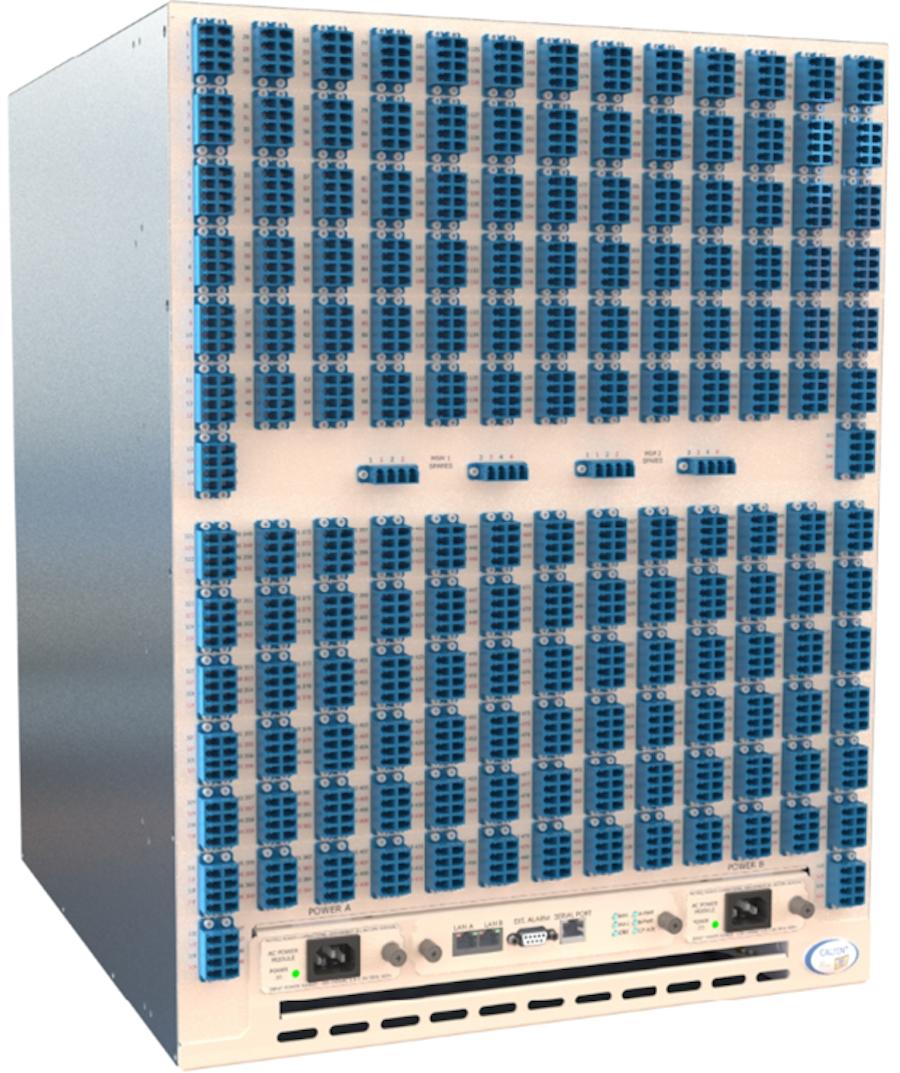Classification of optical cross-connect equipment
In terms of light cross-connect equipment, there is mainly three of the following:
is a cross-connection based on fiber-optic grade ( FXC), we can understand that there is a light distribution frame (ODF), or a smart optical wiring frame, which is a primary stage of optical cross-connect equipment. It has a certain market demand. The disadvantage is that the device itself independent network capabilities Difference.
is a wavelength-based cross-connect device, which is divided into a wavelength selective cross-connection (WSXC) and wavelength exchange cross-connect (WiXC) depending on the application. WiXC is mainly for backbone network applications, and the carrier business is generally STM-16 / OC-48 or STM-64 / OC-192 or even STM-256 / OC-768, and the O / E / O wavelength converter is used in nodes to achieve large Capacity, long distance transmission, cross matrix can be done by optical crossing, or a circuit cross-shaped implementation, especially with the development of semiconductor technology, the size of the electric cross-chip is getting bigger and larger (single piece can reach 160Gbit / s, cross particles Smaller), while optical crossing due to factors such as technologies, the optical cross-connecting equipment based on the electrical cross-cross-connecting equipment will also have a certain development space. WiXC's advantage is that the technology is mature, and the performance is guaranteed. It can realize strict wavelength exchange of strictless blocking, which can achieve wavelength reuse, providing virtual wavelength routing (VWP), the disadvantage is poor system transparency, due to a large number of O / E / O wavelength Converters, expensive, but in this case, it is still not a relatively practical solution.
is also a wavelength selective cross-connect device (WSXC) based on local network or metropolitan area network, and the node is generally not in use or part of the O / E / O wavelength converter, which is more compatible. The rate, multi-service, and the node optical crossform can be constructed from several smaller-scale optical switches, and the WSXC is more practical in the case of too high prices in large-scale optical cross matrix technologies. It should be noted that in the optical network consisting of WSXC or OADM, the wavelength loop should be prohibited, so as not to cause self-excitement, the system is unstable; and the direction of development of optical cross-connect equipment is to support the transparent full-light of the full business. The net, which depends on the practical use of full-optical wavelength conversion and total 3R regeneration.
Function of optical cross-connect equipment
1, the protection and recovery of the optical layer, including the protection and recovery of the ring / grid (Ring / Mesh);

2, end-to-end optical channel service assignment (network level intersection);
3, network optimization and recovery algorithm;
4, dynamic bandwidth management, on-demand Distribute bandwidth;
5, multiple business access capabilities;
6, optical channel automatic equilibrium;
7, dispersion management.
8, optical transmission network OCH / OMS / OTS three-layer model network management system, has business management capabilities;
9, taking into account backbone network, metropolitan network, local network application .
Development prospects
In recent years, with the development of technology and the size of WDM, the capacity of optical network node equipment is increasing, and the survival of the network is higher. Requirements, optical cross-connect equipment set transmission and exchange, with large transmission capacity, flexibility, network has scalability and reconfiguability, easy to upgrade, transparently transmit different speed grades of various formats, It is possible to adapt to the needs of the user's signal type and the growing needs of the service type, which constitutes a node device that constitutes a light transfer network (OTN).
From the perspective of the application, the DWDM networking mode of the point is only the primary stage of the OTN network, and it is expected that the next stage of market hotspot will be able to achieve optical layer business protection and recovery, and the configuration is flexible. The optical cross-connect device / OADM, the mainstream of the network will be a ring network, a multi-ring network, a grid, and a physical layer device that constitutes a ring network, a multi-ring network, a grid network is OADM and optical cross-connect devices.
From the perspective of technology development, the development trend of optical network is 3T (transport link, transfer nodes, and business nodes have Tbit / s capacity) and 2i (integrated intgration and intelligent intelligent). The optical cross-connect device as the core device of the optical network, both T-bit transmission and T bits exchange two functions, and to integration and intelligent development. In terms of integration, future optical cross-connect equipment will exchange circuit board exchange, package exchange, wavelength exchange or even optical packages (may not be called optical cross-connect device), in terms of intelligence, optical cross-connect device Intelligent light networks are moving, such as Ason / Astn, IP / MPLMS.
